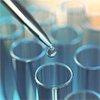| Oct 02, 2023 |
|
|
|
(Nanowerk News) Cornell University scientists have characterized the genome of a metal-loving bacteria with an affinity for rare earth elements. The research paves the way towards replacing the harsh chemical processing of these elements with a benign practice called biosorption.
|
|
Rare earth elements power electric cars, wind turbines and smartphones. Today, retrieving these metals from raw ore requires processing with acids and solvents. But a new technology, envisioned by the scientists and powered by a microbe, could make processing rare earth elements cleaner and scalable — helping provide a steady U.S. supply for clean energy infrastructure and defense applications.
|
|
Their research was published in Scientific Reports (“Genomic characterization of rare earth binding by Shewanella oneidensis”).
|
|
“The problem with the current methods of rare earth element purification is that they rely heavily on organic solvents and harsh chemicals,” said senior author Buz Barstow, assistant professor of biological and environmental engineering. “These methods are costly and environmentally damaging. Here we have a green alternative that uses microbes to selectively adsorb and purify rare earth elements, eliminating the need for harmful chemicals. We’re making the purification process greener.”
|
|
The microbe selectively adsorbs – or clings – to these rare earth elements, making it an ideal candidate to carry out an eco-friendly purification procedure.
|
|
Generally, S. oneidensis prefers dining on the f-block elements residing in the sixth row of the periodic table, known as the lanthanides. Specifically, the microbe favors europium.
|
|
Characterizing the S. oneidensis’s genome allows scientists to tweak its preference for processing the other rare earth elements.
|
|
This work has the potential to make processing rare earths cleaner and scalable, said lead author Sean Medin, a doctoral student in Barstow’s lab. “Currently all the purification of rare earth elements is done abroad, due to stringent environmental regulations and high infrastructure costs of building a separations plant,” he said. “Our process would make environmentally harmful solvents unnecessary.
|
|
“Our process potentially would be significantly less land- and capital-intensive to build,” Medin said, “as our separations could be done with repeated enrichment through columns full of immobilized bacteria instead of mixer-settler plants that are miles long.”
|
|
The group anticipates creating a pilot-scale purification system by 2028.
|

